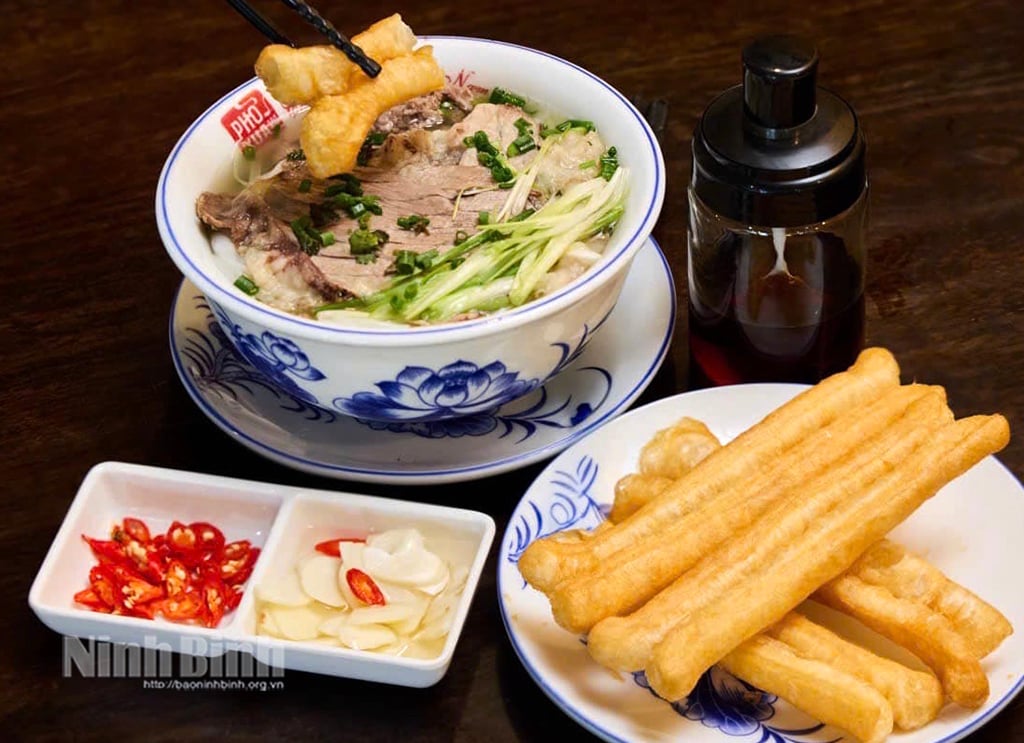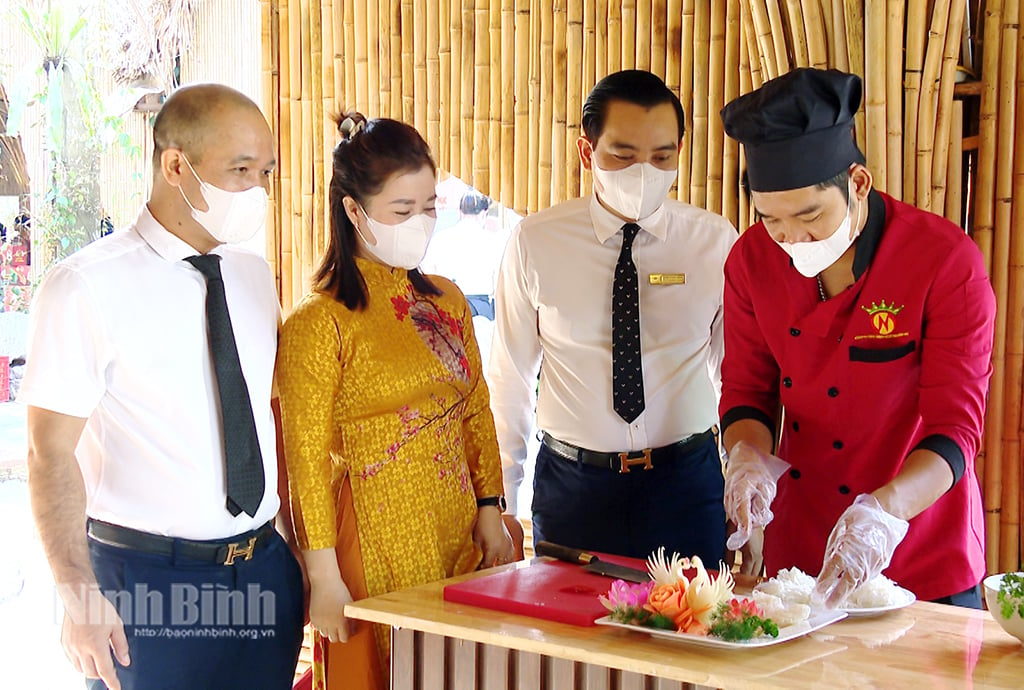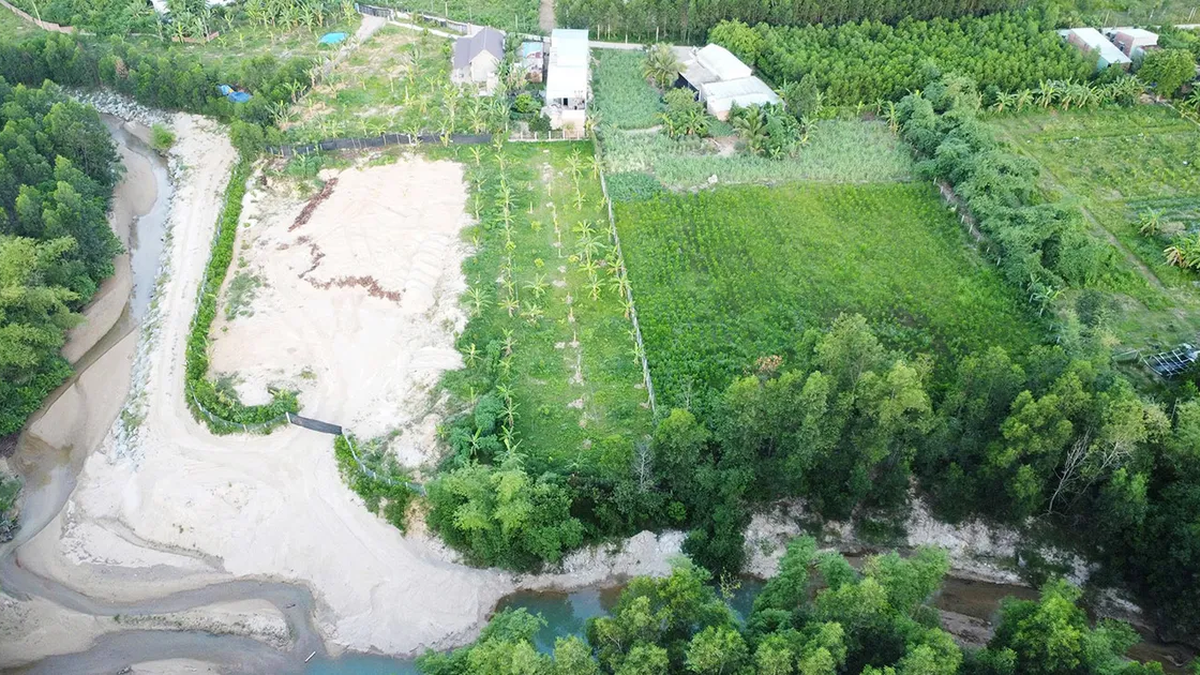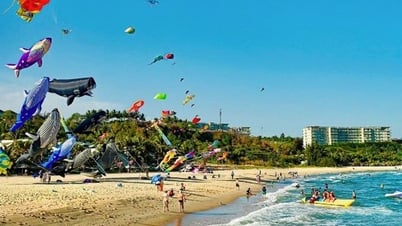
"Multi-colored" culinary picture
Ninh Binh, Nam Dinh and Ha Nam have long been known as localities with rich and diverse cuisines. Each region has its own specialties and tastes, but when combined, this diversity does not conflict but complements, creating a rare and rich culinary ecosystem.
Ha Nam cuisine is rustic, focusing on dishes made from agricultural products of the delta, such as braised fish from Vu Dai village, grilled spring rolls from Phu Ly, and royal bananas from Dai Hoang. This place is also famous for its products made from beans, soy sauce, fresh vermicelli, and dishes made from field crabs, etc. associated with traditional craft villages and rural markets.
Ninh Binh, with its semi-mountainous terrain, has dishes imbued with the flavor of limestone mountains such as goat meat, burnt rice, mountain snails, eel salad, sour sausage... The flavors here are often strong, using many rustic spices such as lemongrass, ginger, galangal, chili sauce to create a unique, rustic yet attractive characteristic. In particular, Ninh Binh goat meat has been established as a Vietnamese specialty; raw goat with lemon has been voted as one of the best goat dishes in the world.
Nam Dinh has a long-standing culinary tradition, notable for its noodle dishes such as bun cha, bun rieu, and traditional beef pho. This land is also known as a sophisticated culinary center with traditional villages making cakes, candy, and fish sauce. Nam Dinh's culinary culture often has an urban, neat appearance but still contains traditional, unforgettable flavors. The dish "Pho Nam Dinh" has been recognized as a National Intangible Cultural Heritage.

Evaluating the culinary picture of this land, Mr. Truong Nam Thang, a tourism expert, commented that the three regions of Ha Nam, Nam Dinh, and Ninh Binh all have cultural identities and geographical locations similar to the tropical monsoon climate, with terrain including mountains, midlands, plains, rivers, swamps, and coastal areas... A place where many diverse and rich species of plants and animals converge, creating a natural source of ingredients for cuisine.
The merger of three provinces opens up an unprecedented opportunity to form a culinary region with a very clear identity, both plain and mountainous, both rural and urban, both ancient and royal, both rustic and natural. On average, each tourist will spend about 1/3 on culinary needs, so exploiting the true value of culinary culture will contribute to clearly positioning the culinary brand of this land, while increasing value and increasing the length of stay.
"However, without a proper strategy and planning for culinary development associated with tourism, agriculture, processing industry and cultural industry, this opportunity will pass very quickly," Mr. Truong Nam Thang added.
Need a systematic strategy for the "new culinary region"
Possessing a rich and diverse culinary culture with the quintessence of preparation and enjoyment methods that have been summarized over thousands of years of history, Ninh Binh province has great potential to develop culinary tourism.
In recent times, the tourism industry and localities have focused on exploiting culinary culture to promote tourism development such as: participating in fairs, organizing culinary festivals, promoting the value of festivals, organizing cooking classes or culinary tours... Thereby, bringing authentic and attractive experiences to tourists when they can fully explore the delicious dishes of the Red River Delta.

However, with the expansion of space and administrative boundaries, it is necessary to pay attention and develop strategies to exploit and preserve the culinary cultural values of the new land. Culinary artist Le Thi Thiet, founder of the brand "Pho Xua" Nam Dinh, has devoted many years of dedication to researching, perfecting the recipe and preserving the culinary cultural values of pho.
Ms. Thiet said: “After the merger, Ninh Binh cuisine does not lack specialties, it just lacks connection. Previously, many people thought that goat dishes or pho were only available in a few restaurants. But when linked with tourism and invested properly, the products have appeared on the dining tables of 5-star hotels, even exported.”
Culinary artist Le Thi Thiet also hopes to build Ninh Binh into a "culinary capital" in the near future. However, to realize that goal, it takes a long, systematic process from building a detailed culinary map associated with promoting and introducing media to paying attention to creating spaces for culinary performances in culinary neighborhoods or regional culinary festivals so that people, tourists and artisans have a place to introduce, exchange and create. For Hoa Lu royal dishes, it is necessary to continue to restore and preserve; for dishes that are associated with local brands and history such as "Pho Nam Dinh", "Vu Dai village braised fish" ..., it is necessary to continue to preserve the brand, avoiding losing the name when merging.
Sharing the same opinion with artisan Le Thi Thiet, Associate Professor, Dr. Tran Duc Thanh, a tourism expert, said that despite its rich potential, the cuisine in Ninh Binh province still faces many difficulties such as the lack of industry linkage chains, the connection between raw materials, production, processing, distribution and promotion is still fragmented. In addition, the mechanism for protecting culinary brands, supporting artisans, craft villages or preserving and exploiting culinary culture in some localities are also issues that have not been focused on and are not effective.
Associate Professor, Dr. Tran Duc Thanh proposed that in the coming time, the Department of Culture and Tourism should research and create a "New Ninh Binh Culinary Map" including a list of dishes, craft villages, places to enjoy, and processing artisans. This data needs to be digitized for continuous updating and promotion.
In addition, it is necessary to combine cuisine with tourism and experience by organizing specialized culinary tours combined with the experience of making dishes with artisans and locals. Currently, the needs of tourists are no longer to "eat their fill" but to "the art of enjoyment", so the processors need to "refine" dishes to honor the quintessence of culture and history.
The new Ninh Binh not only possesses famous heritages but can also become a unique culinary center of the region and the whole country. When culinary values are connected and exploited properly, this ancient land will not only satisfy domestic diners but also have the opportunity to "export flavors" to the world, contributing to the elevation of tourism, culture and local economy.
Source: https://baoninhbinh.org.vn/co-hoi-khang-dinh-ninh-binh-tren-ban-do-am-thuc-quoc-gia-247260.htm
























































































![[Infographic] In 2025, 47 products will achieve national OCOP](https://vphoto.vietnam.vn/thumb/402x226/vietnam/resource/IMAGE/2025/7/16/5d672398b0744db3ab920e05db8e5b7d)












Comment (0)